Elderflower Chive Fritters
A savory twist on a wild spring treat.

Chives provide brightness without overpowering the elderflower.
As I've mentioned before, I love elderflower and feel a strong connection to the elder tree (more on the “regal elder” and foraging here). Until recently however, the only things I've ever had made with elderflower have been using a sweet cordial. So when I saw a few recipes for elderflower fritters using the whole flower, I was immediately intrigued and wanted to attempt a savory version. The batter contains lemon zest and chives, because I felt that these would add some zest and complexity without overpowering the floral qualities. I served it with ponzu for a dipping sauce, but honestly, we didn't use it much as the fritters stand best on their own! The below recipe makes about 40-45 small fritters, enough for 4-6.
~10 medium-large elderflower heads, broken up into 40-45 small florets
1 cup all-purpose flour
Pinch yeast (champagne or baker's, I used champagne because I had some leftover)
6-8 fluid ounces apple cider or sparkling water
1/2 tablespoon finely grated lemon zest
1/4 teaspoon sea salt, divided
2 tablespoons diced chives, divided
Grapeseed oil, for frying
Ponzu or aioli for dipping (completely optional)


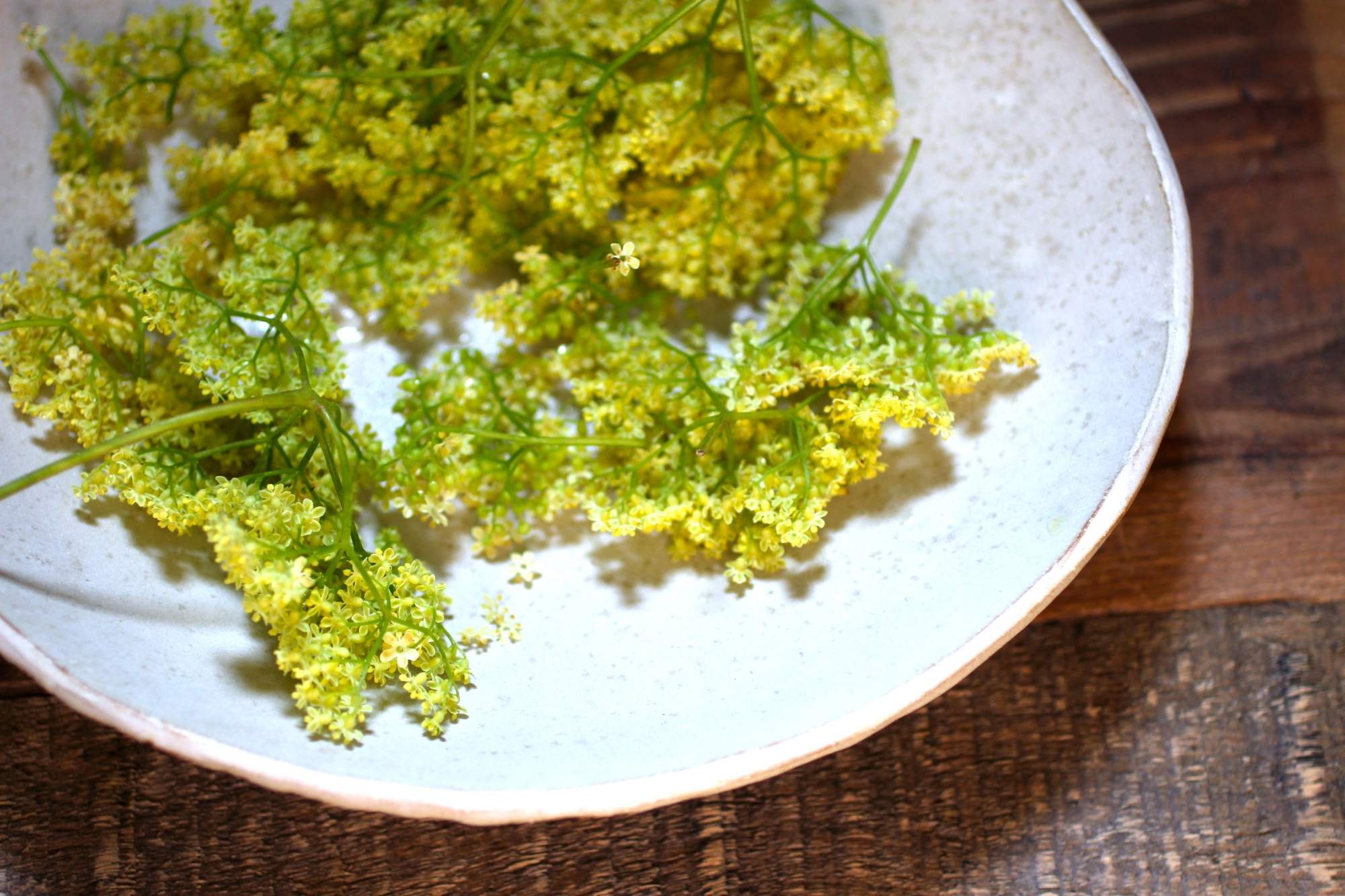
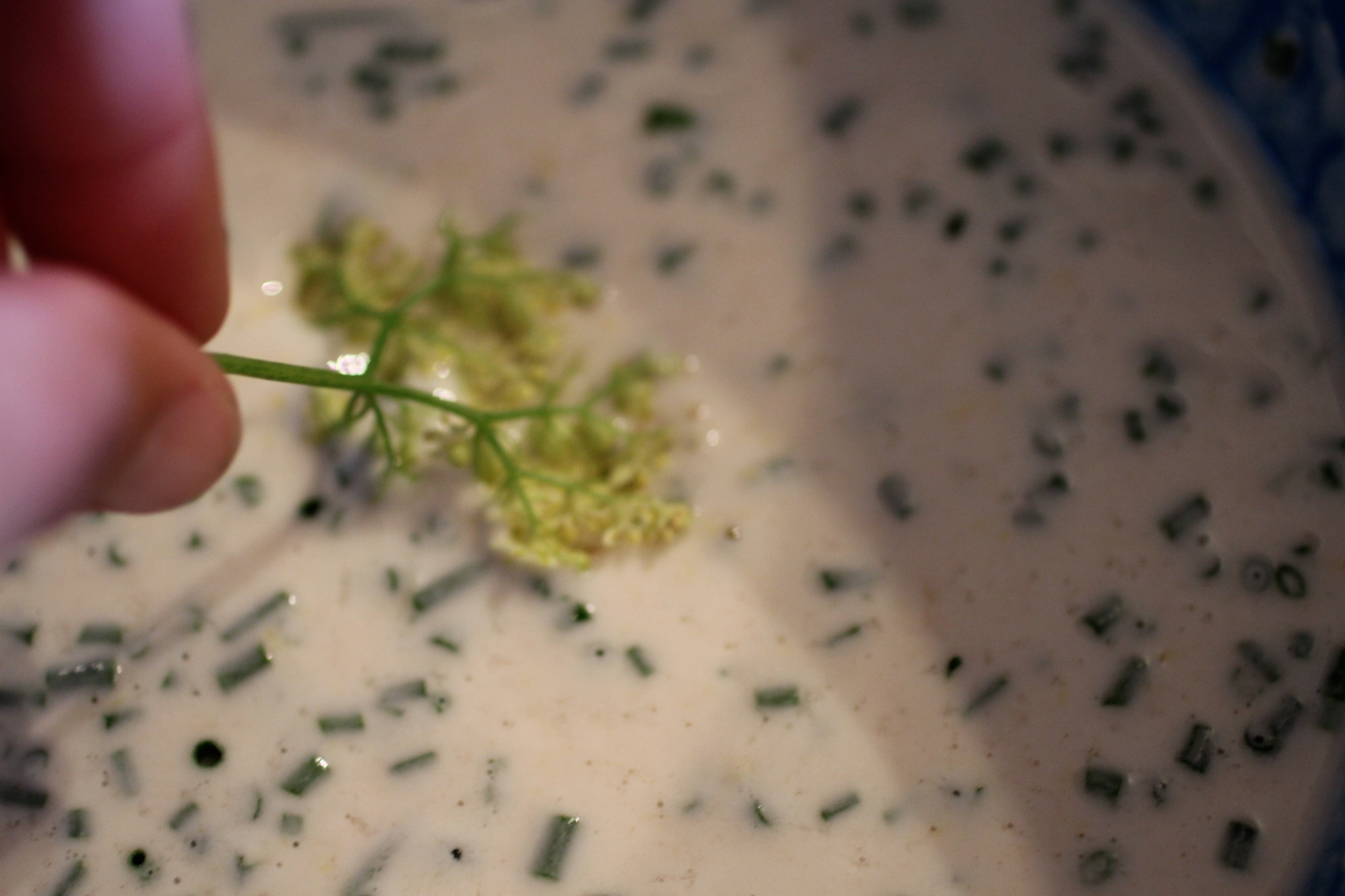
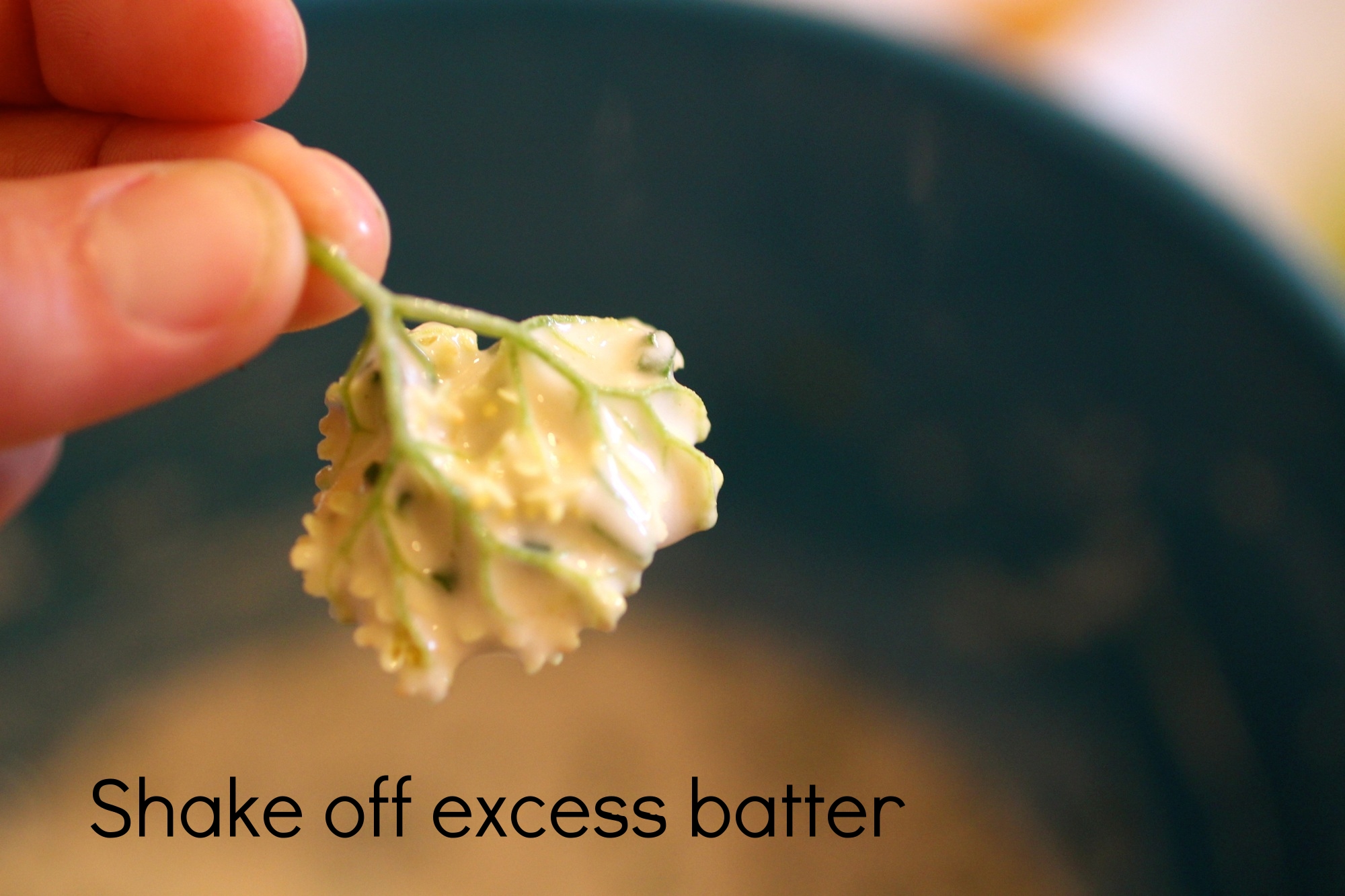
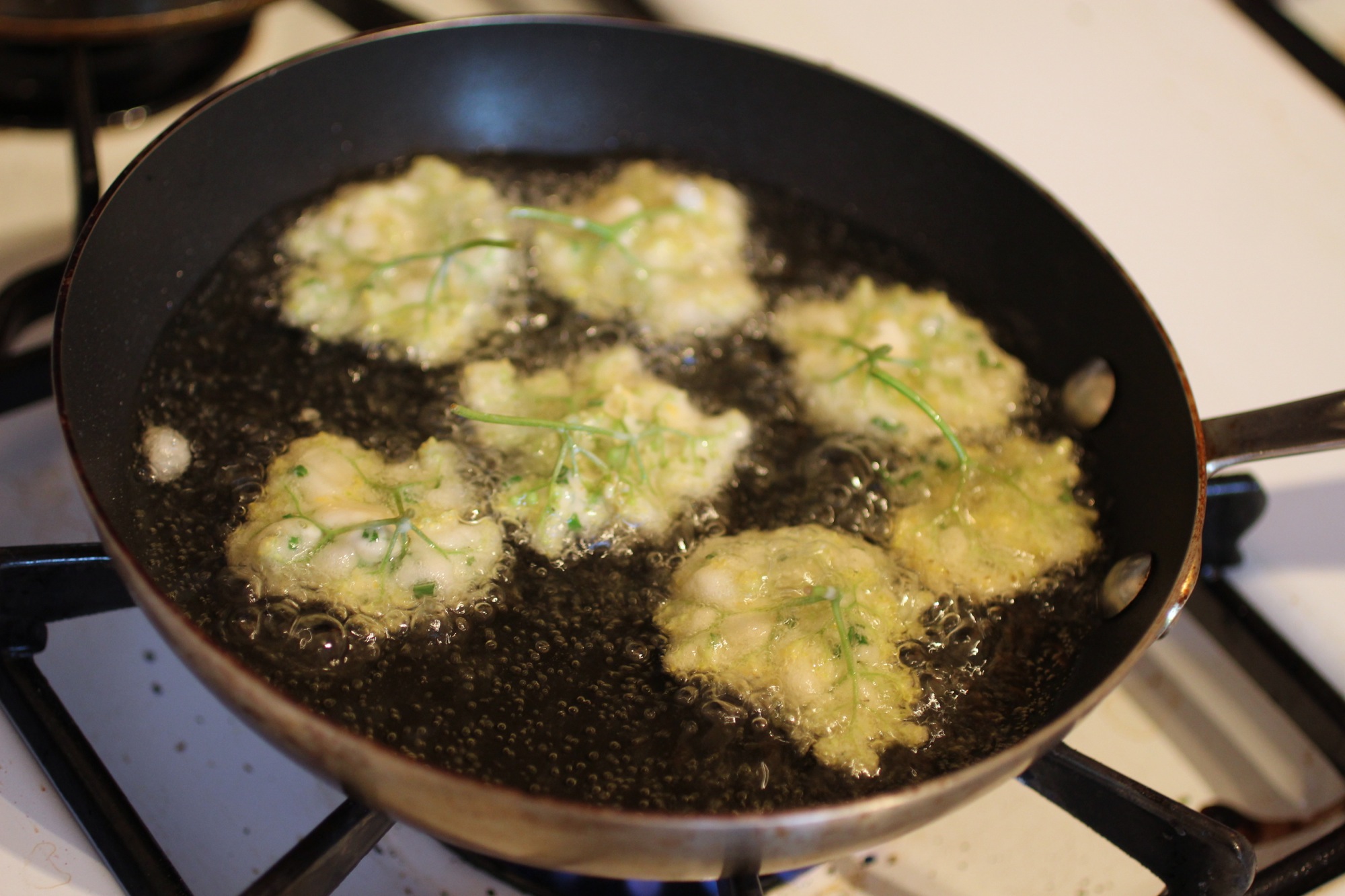
Shake blossoms to remove hitchhiking bugs and dunk into a large bowl of cold water. Remove from water, shake to remove as much water as possible (and probably more bugs!), and pluck smaller clusters (about 1-inch each) from larger clusters, removing as much large stem as possible (there will be some stems still, as that's how the flower clusters stay together). Set aside on a paper towel to dry more.
Whisk flour with yeast, 6 ounces cider, lemon zest, and 1/8 teaspoon salt until combined. Batter should be runny like pancake batter and will start to fluff up from the yeast. If batter is not runny enough, add some more cider then gently whisk in 1-1/2 tablespoon chives.
Pour enough grapeseed oil into a frying pan so that oil is 1/2-inch up the sides of the pan and heat to high.
Once oil is hot, dip florets (one at a time) into batter, shake off any large clumps, and fry in oil until golden brown, about 1-2 minutes on the side opposite the stem, then flip and fry another 30 seconds on the stem side.
Remove fritters and place on paper towel, then repeat with florets in batches until all are fried.
Top fritters with dusting of remaining salt and remaining chives. Serve with ponzu or aioli if desired.

Ponzu not needed, but a cocktail is!
The Regal Elderflower
A fragrant pagan declaration of summer.

Processing elderflower for fermented cordial with the Nordic Food Lab crew. We were all covered in pollen after this flower-plucking session! Species of elder likely Sambucus nigra.
There's something truly special about the elder, or Sambucus, plant and I've always felt a special connection to it. Not only does it proclaim to the world that summer is approaching and provide culinary and medicinal benefits, but it also somehow manages to be both utterly wild and elegantly refined at the same time. The plant is likely called "elder" because it is so old that you can find varieties of it around the world. It's no surprise then that so many cultures have different symbolisms and uses attached to Sambucus including (but definitely not limited to) the below.
Symbolism
Shakespeare: Grief (the "stinking elder"), yet also beloved
Pagan: Superstitions around cutting it back or burning it (will cause bad luck)
Danish: The elder Mother or "vegetation goddess" lives in the tree (HyldeMoer) - you need to ask her permission before cutting it.
Sicilians: Kill serpents and drive away robbers
Serbians: Good luck if used during the wedding ceremony
England: Hold in pocket to ward off lightning, cross above animals to ward off evil
Supposed Medicinal Uses (Note: I have not looked into the scientific evidence supporting any of the below, but rather wanted to show the breadth of supposed medicinal uses)
Bark: Purgative, emetic, diuretic, asthma (not consumed anymore due to toxins)
Leaves: Bruises/sprains, wound healing, expectorant, diuretic (not consumed anymore due to toxins)
Flowers: Tea for swollen sinuses, colds, flu, diabetes, constipation, rheumatism, influenza, relaxant, complexion, blood purification
Berries: Hot wine for influenza, asthma, juice for antiviral/antibacterial
Food
Flowers: Cordial (St.Germain is an elderflower liqueur), desserts, jelly, shrub, fritters
Berries: Cordial, wine, syrup, desserts, jelly, etc.
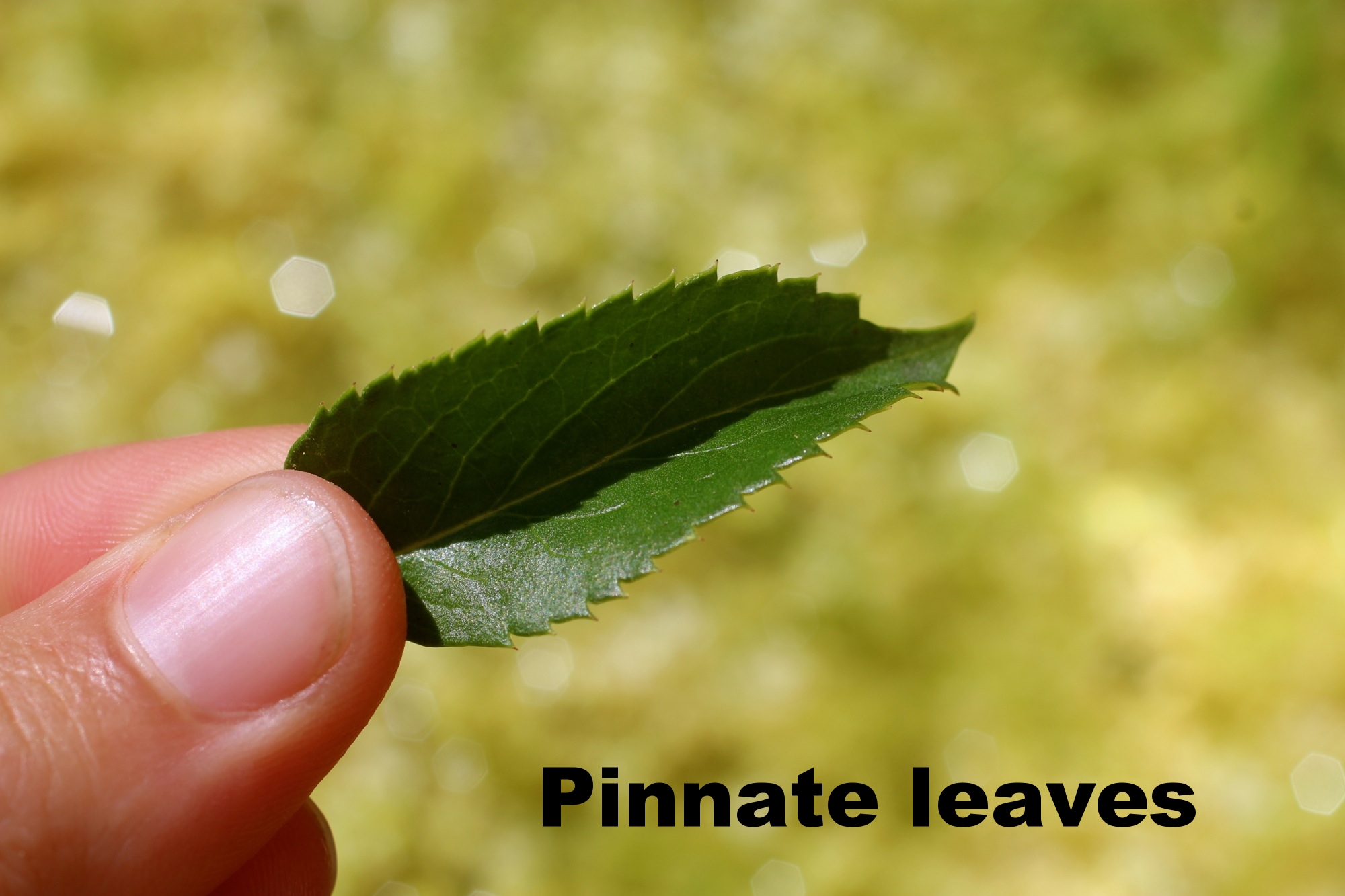
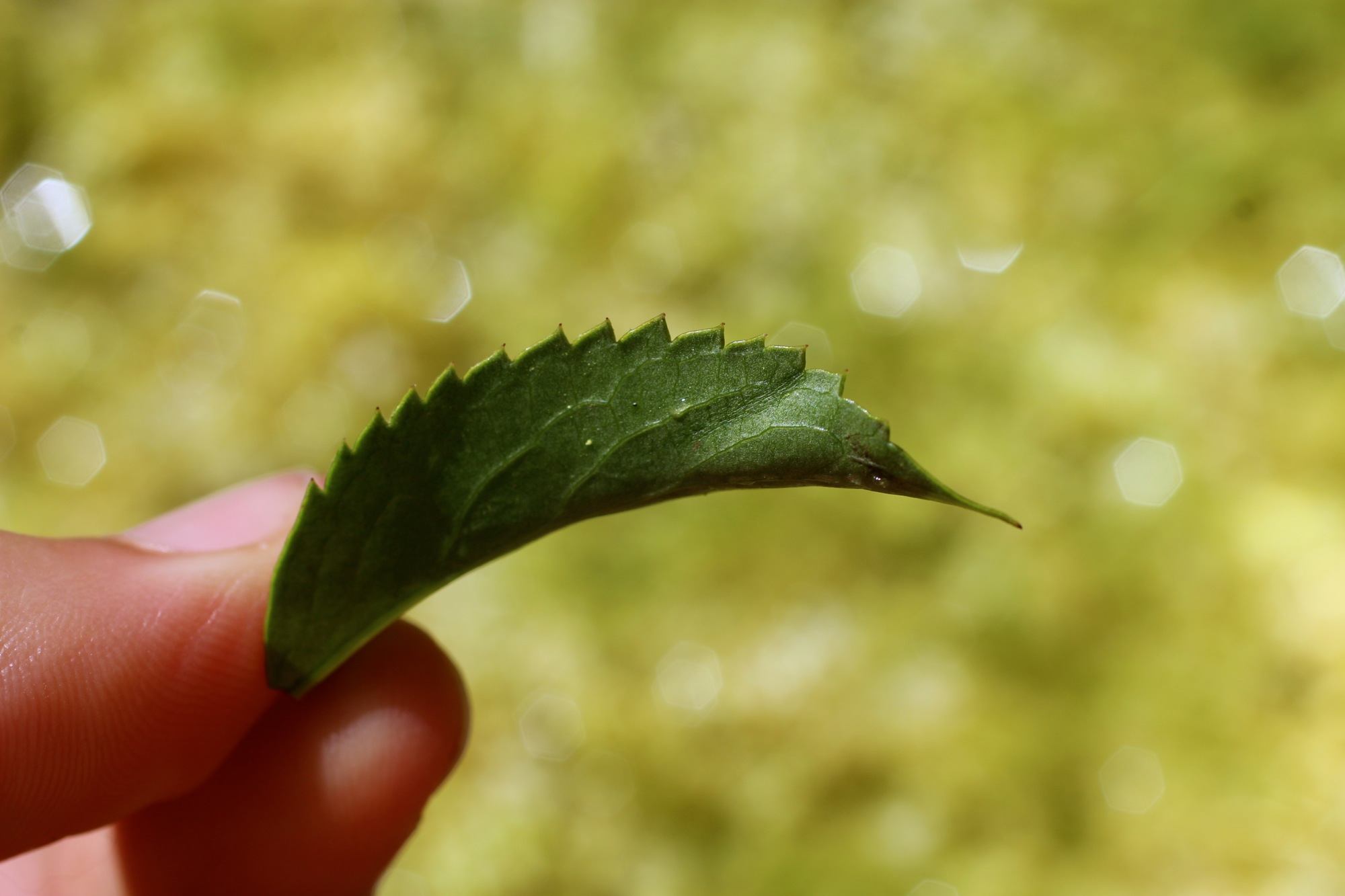
The elder tree can grow up to 25 feet tall and has reddish bark and pinnate leaves opposite of each other. The tiny star-shaped flowers, which bloom in May/June, are a yellowish white/cream color and grow in clusters. The elder plant that you will find in Northern California (and most of the Western United States) is Sambucus cerulea, also known as blue elder for it's dark blue berries. The berries can be found later in the summer, are a bluish/black often with a whitish powder sheen and also grow in large clusters.
ELDERFLOWER AND ELDERBERRIES MUST BE PROCESSED BEFORE CONSUMING. Don't just go around grabbing handfuls and consuming them raw like you would blackberries! However, the berries may be fine in small amounts and both berries and flowers are definitely safe after cooking or drying. When using the flowers, such as in this elderflower chive fritter recipe, it's best to remove as much of the stem as possible, but some stem is fine if cooked.

Notice tiny star-shaped flowers. This Sambucus nigra from Europe has larger clusters and whiter flowers than the Sambucus cerula of California.
My first experience with elderflower (other than St.Germain) was during my stint as a visiting researcher at the Nordic Food Lab in Denmark. We spent a morning riding all over Copenhagen to forage huge clusters of elderflowers and stuffing them into sacks before plucking the flowers to be used in a fermented cordial. I still fondly remember being covered in pollen afterward while enjoying a well-deserved chocolate rye roll. Denmark is really a magical place and elderflowers unsurprisingly about there. The elderflowers you find in Denmark are most likely to be Sambucus nigra rather than the Sambucus cerulea that is found in California and are a bit larger and whiter, but both have the same beautiful fragrance and uses. As I left Denmark before the berries came out and just recently found a spot for elder in California, I have yet to experiment with the berries, but am greatly looking forward to doing so this summer!

Yellower, yet still star-shaped, flowers of the Sambucus cerula foraged from Tilden Park in Berkeley, CA.
Wanting the Unwanted: Why Eat Weeds
Wild food week 4/4 - 4/10!

What is the first food that comes to mind when you hear "foraged"? My guess is that a mushroom came to mind. While it's true that most mushrooms are grown in the wild, there's an abundance of other wild plant foods that are much easier to find and identify.
Just because these wild plants are out there, does that mean we should eat them? My colleagues and I of Berkeley Open Source Food (BOSF) are arguing yes. Here's why:
Nutrition:When the human diet shifted from hunting and gathering to agriculture some 10,000-20,000 years ago, we began the process of selecting certain monocultures for specific characteristics. Decreasing agricultural diversity had benefits, including population growth, but also led to a decrease in a variety of nutrients, particularly phytonutrients, causing the Western diet to have a much narrower range of nutrients today than it did thousands of years ago. These phytonutrients may reduce our risk for modern chronic diseases such as diabetes, heart disease, and cancer. Incorporating more wild foods into our diet might help reduce the risk of chronic disease.

Ubiquitous snack: the humble dandelion
Sustainability: It's no secret that California is experiencing a massive drought. These wild plants require no water beyond what nature provides, are largely drought-resistant, and are abundant in urban environments. Additionally, if we can make it profitable for farms to harvest and sell their edible "weeds" rather than compost them, we'll increase farm efficiency. Finally, of course we also all have Armageddon in the back of our minds (or at least I do) and knowing about wild edible plants will set us up for success when the time comes!
Culture: When was the last time you picked your food from the ground? How did it taste? Did it give you a warm fuzzy feeling? Research indicates that even children who are reluctant to try vegetables will do so if they have a hand in harvesting them and foraging is no different. By knowing where our food comes from, we're helping get back to where we started, if even just a bit, which will result in improved quality of life.
Gastronomy: Let's face it, new, crazy ingredients are fun. Even if you don't want to "get wild" with wild foods personally, it's exciting to go to a restaurant and have them introduce you to a new, delicious, local plant, no?

Gastronomy: Getting wild at the Chez Panisse tasting table with chefs from The Perennial/Mission Chinese Food, Mission: Heirloom, and (of course) Chez Panisse.

Tasting table notes.
So, the next question is - how do we get these tasty, nutritious, and abundant plants on people's plates? The answer is multi-faceted, exciting, and challenging. A few of the angles we're taking to tackle the issue include mapping wild edibles in "food deserts", investigating barriers to consumption (and identifying how to overcome these barriers), creating a supply chain and market for wild foods, and promoting consumption of wild edibles.
One project on BOSF's foraged plate now is Wild Food Week, which begins tomorrow (4/4) and runs through Friday 4/10. Our intention with Wild Food Week is to increase awareness of and interest in wild edibles with a series of events from a guided foragers’ walk to dinners at César, Chez Panisse, The Perennial/Mission Chinese Food, and Mission: Heirloom. We are working with several local farms to source the edible weeds and will debut a foraging field guide called The Bay Area Baker’s Dozen Wild Greens. See event details here.
It's been an exciting and eye-opening journey with many unique challenges. I look forward to telling you more about these challenges as well as a debrief on the events and our successes. For now, here's a sneak peak of the top 13 most common wild edibles in the Bay Area that we've included in the Bay Area Baker's Dozen Wild Edibles field guide. If you donate $15 or more to Berkeley Open Source Food, we'll mail you a field guide of your very own! Just be sure to mention this in the "additional details about my support" section. Donate here.


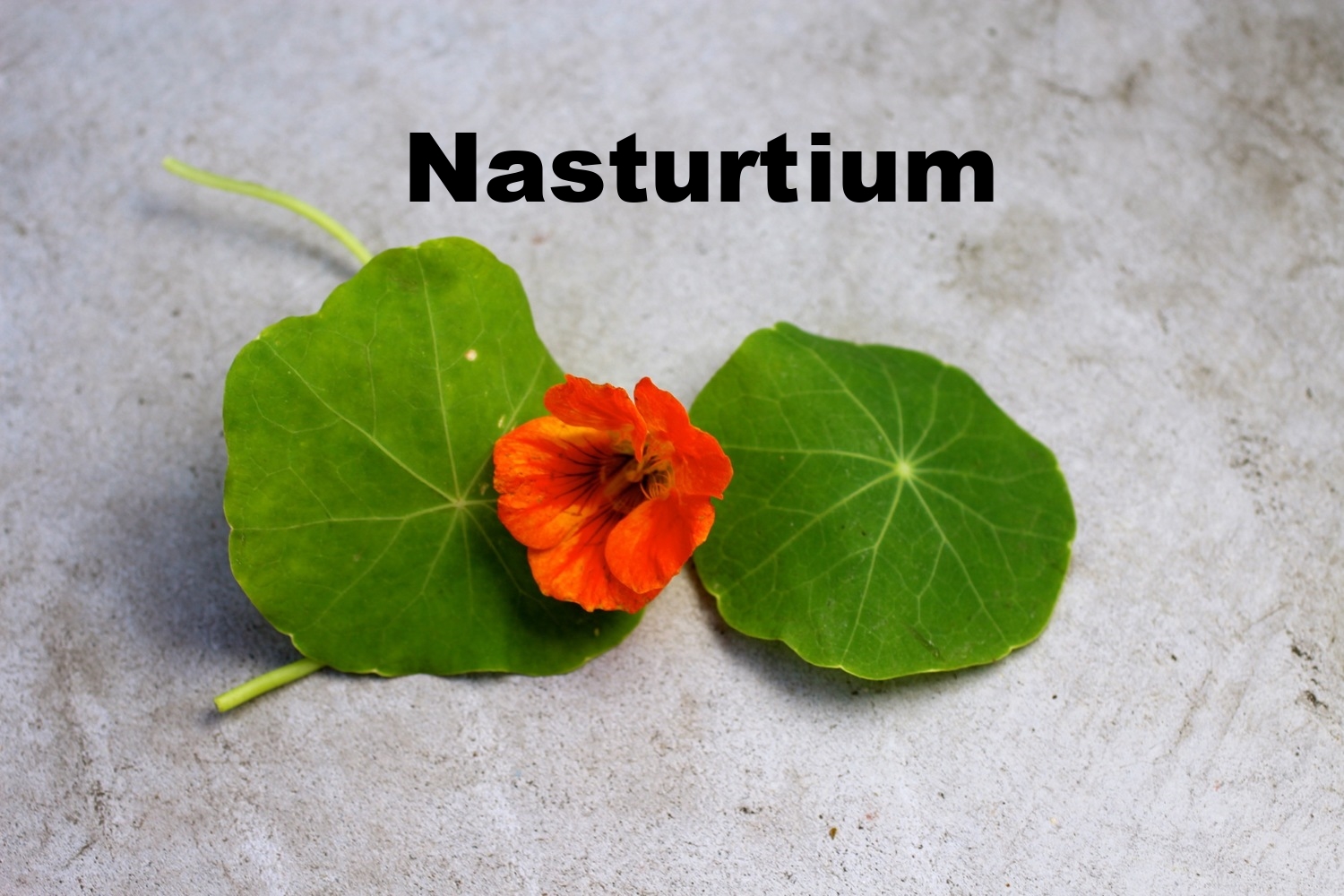



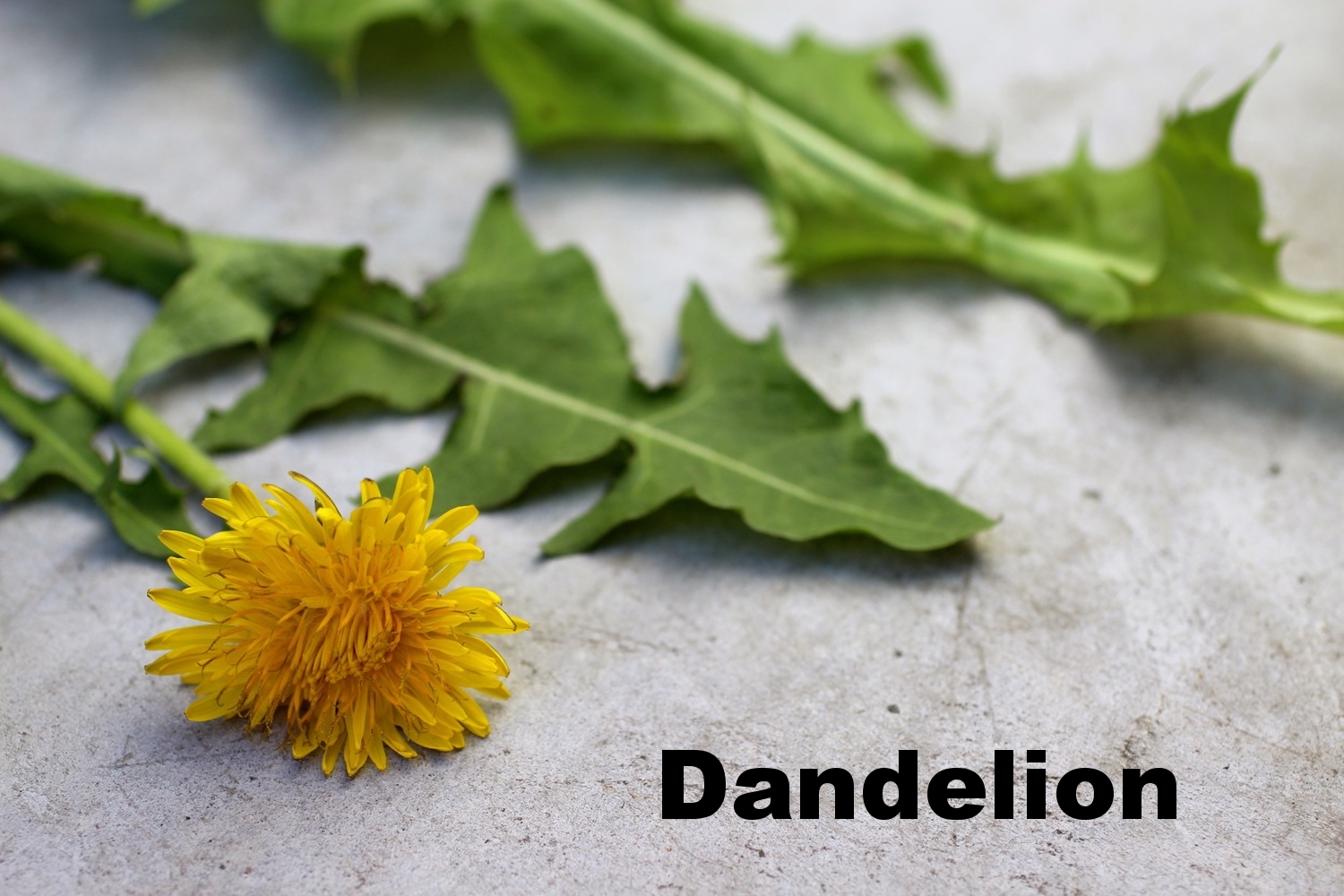


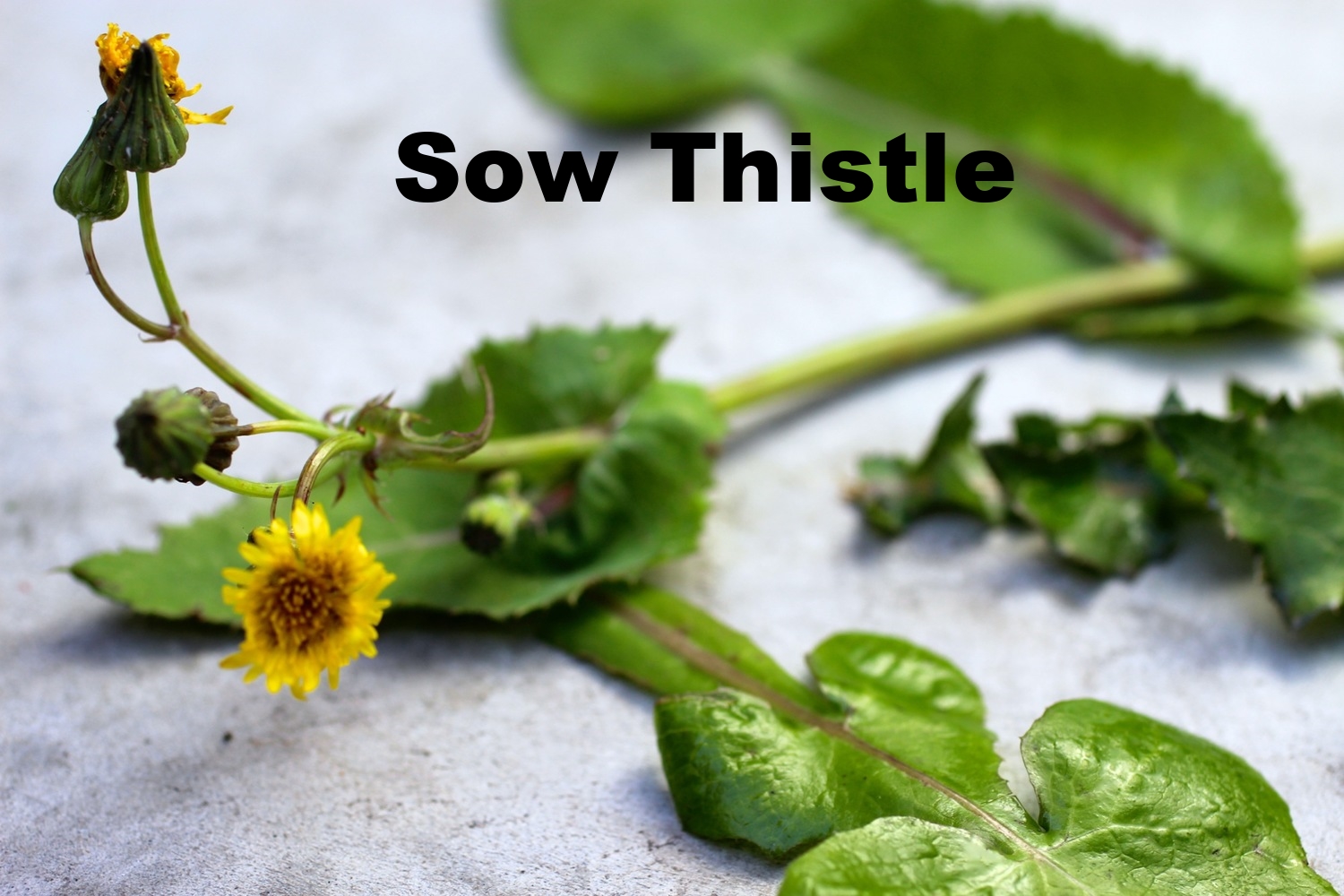

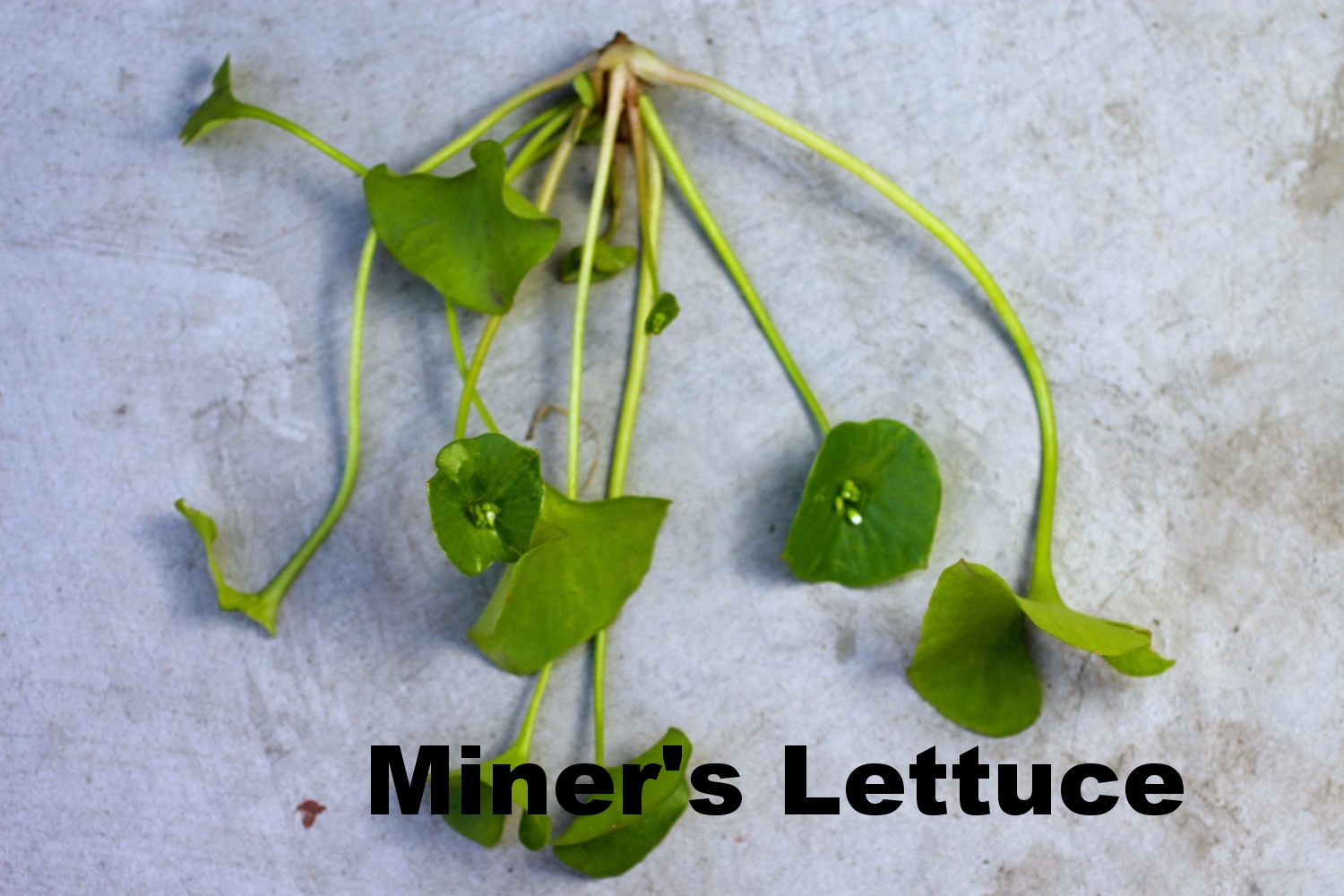
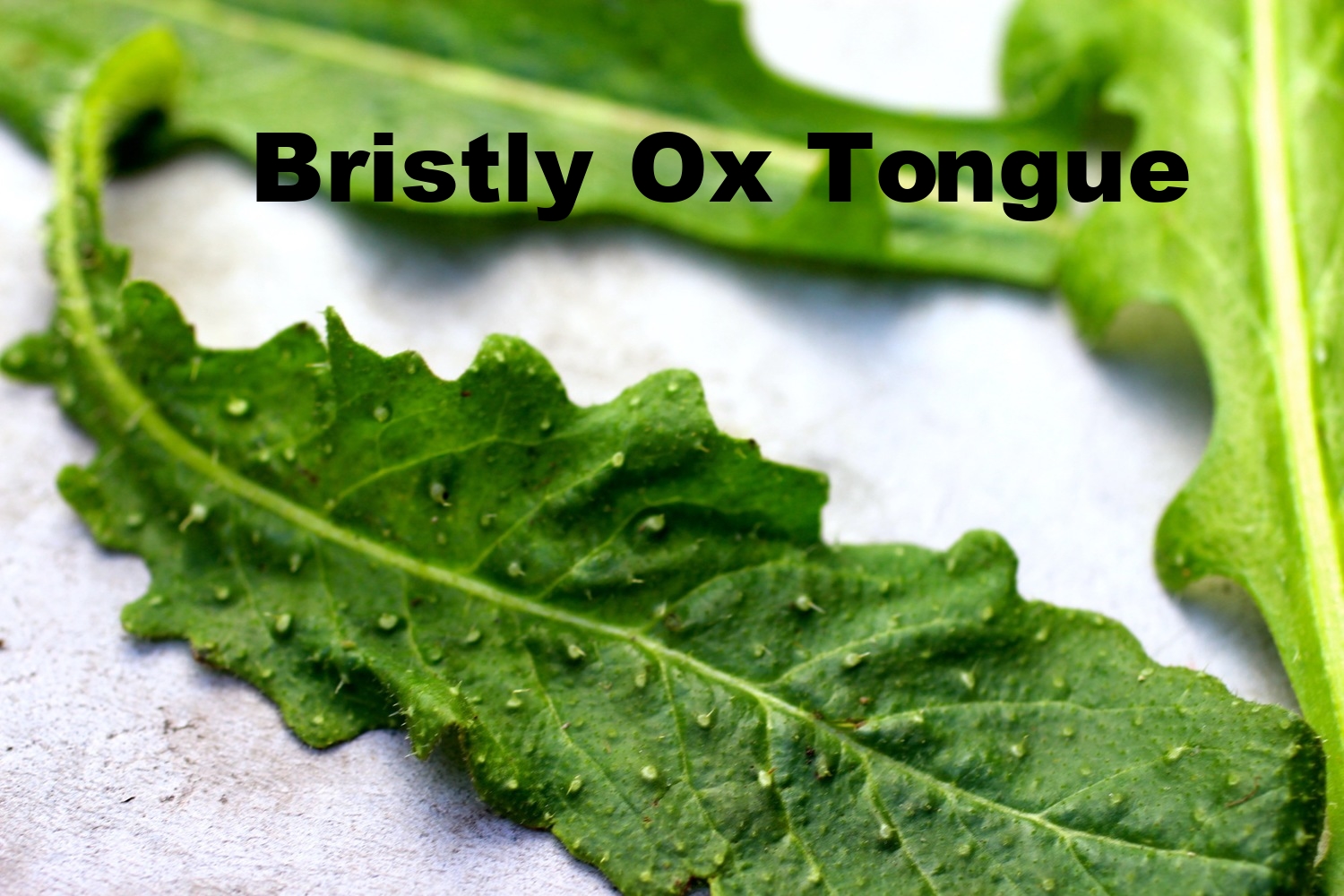
Here's an idea of what the field guide looks like - donate at least $15 to Berkeley Open Source Food and we'll send you one!

We've had a lot of press for this event - check it out!
http://www.eastbayexpress.com/WhatTheFork/archives/2015/03/31/slinging-weeds-wild-food-week
http://us7.campaign-archive2.com/?u=5da7f13757629775a7e122725&id=0b39e78e13&e=d87ccf06ab
http://www.citylab.com/work/2015/04/how-do-you-convince-people-to-eat-weeds/389357/
http://missionlocal.org/2015/04/for-wild-food-week-weeds-for-dinner/
http://www.nbcbayarea.com/news/local/Wild-Food-Week-298812881.html
References:
Gibbons, E., 1962. Stalking the Wild Asparagus, David McKay Co., Inc., NY, 303pp.
Robinson, J. “Breeding the Nutrition Out of Our Food”. The New York Times, 2013.
Craig, W. “Phytochemicals: Guardians of our health.” J Am Diet Assoc. 1997;97:199-204.






